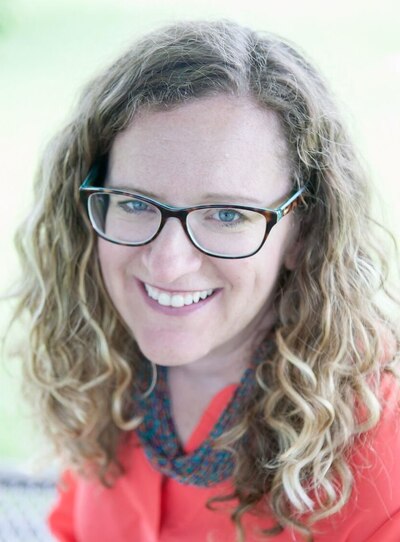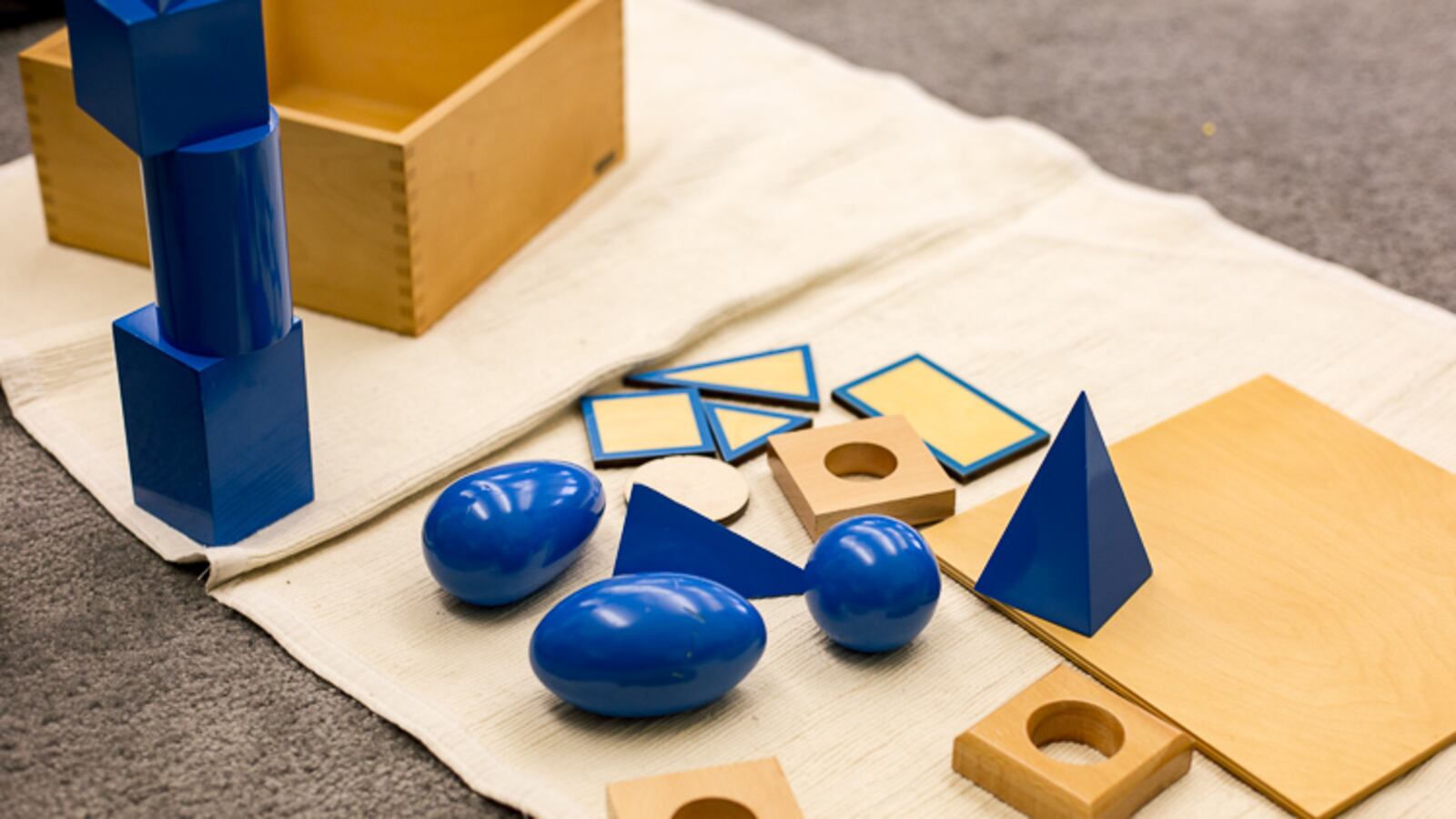How do teachers captivate their students? Here, in a feature we call How I Teach, we ask great educators how they approach their jobs. You can see other pieces in this series here.
Allison Sampish’s kindergarteners read books and watched videos about lions, but still they had questions. To get those questions answered, she tracked down a researcher who studied lions and set up a video call so her students could hear from a true expert.
The kids got their questions about lion manes and hunting habits answered, but more importantly they learned to follow their curiosity and passion, she said.

Sampish, a teacher at Fall River Elementary in the St. Vrain Valley district, talked to Chalkbeat about her switch from accounting to teaching, what she does when kids are off task and how she helped parents figure out how to talk to their kids about school.
Sampish is one of 20 educators selected for the state’s new Commissioners Teacher Cabinet. The group, which met for the first time Tuesday, will provide input to officials at the Colorado Department of Education on the impact of education policies in the classroom.
This interview has been condensed and lightly edited.
Why did you become a teacher?
My mom would tell you I was a teacher at a very young age, always walking backwards in front of my line of younger cousins and teaching my stuffed animals with chalk on the sidewalk. After working as a public accountant for five years, I realized I was ready to pursue my childhood dream and become a kindergarten teacher. I knew I wanted to facilitate wonder-filled and discovery-based learning experiences for my students every day. I strive to create interdisciplinary tasks that allow my young students to collaborate, enhance their critical thinking skills and communicate their learning.
What does your classroom look like?
We work very hard every year to create a fun, collaborative environment where everyone can learn. Supplies are found at a kindergartner’s eye/hand level and there is frequently a “buzz” coming from our room as they work together to research, build or solve a problem. Dr. Seuss books and characters are also found throughout the classroom. Each year we set the goal that together when they leave me as readers they will be able to read “Green Eggs and Ham” or “Cat in the Hat” all by themselves!
Fill in the blank. I couldn’t teach without my __________. Why?
I couldn’t teach without my students’ sense of curiosity. Every day during readers’ workshop kindergartners run across the room to share new knowledge about an animal or nonfiction topic. I love in math when they become so curious about shapes and all year look for them around us. Or, in social studies, when they truly discover what it means to be part of a community.
What is one of your favorite lessons to teach? How did you come up with the idea?
This year my kindergartners and I were reading a National Geographic magazine article about lions. They began asking many questions that we added to our “Wonder Wall.” Over the next few days we borrowed books from the library and watched various videos to try and answer our questions. While we answered many of our questions there were still some “big wonders” unanswered. I wanted to model that even as adults we often seek the knowledge of an expert, so I found a lion expert from Virginia Polytechnic Institute to call via Skype. She shared pictures of lions she studied in Africa, helped us act out how female lions hunt, and helped us truly understand the purpose of a male lion’s mane.
The point of lessons like this is not just to teach more about lions, but to encourage them to follow their passion and genuine sense of curiosity and wonder. This type of lesson is always my favorite year after year because they are student-led based on that group of kindergartners’ passions and curiosity. Past inquiry topics have included: blue whales, volcanoes, water cycle, penguins, zebras, narwhals, Africa and Legos.
How do you respond when a student doesn’t understand your lesson?
If a student doesn’t understand a lesson or concept I quickly ask myself: Do they not understand because they don’t have the skills or background knowledge to understand this concept? Or are they not understanding because of the way I explained the concept or lesson? Based on this reflection I then will either step back and teach them the background knowledge or skill they need or try to explain it a different way.
Oftentimes the student just needs a little more time and practice so I find/create a new game or activity to give all of us a chance to really understand the lesson. For example, in math we often need more practice with addition and subtraction so I will make sure all our math centers are addition and subtraction games with dice, cards, manipulatives, board games or word problems we wrote as class.
How do you get your class’s attention if students are talking or off task?
I have a small wind chime at the front of the classroom that the kindergartners are allowed to ring at any time. They quickly figure out that if their peers are too loud they can ring the chime and ask their friends to please “write with their pencils not their mouths” or to “please turn down their volume.”
I use a lot of proximity to get individual students’ attention or hand them a rain stick that is their “pass” to take a rain stick walk around the hallways to refocus. If several students are off task, then I take it as a sign that we all need a movement break, so we stand up and dance to a favorite nursery rhyme or song.
How do you get to know your students and build relationships with them? What questions do you ask or what actions do you take?
At the beginning of the year we do several activities to really get to know each other. We roll a question cube (i.e. favorite color/book/food/activity/animal). The kindergartners love making connections among their new friends. We also make class books once a month that include our writing and pictures or drawings. These class books become favorite books to reread on their own.
Each day during snack time we have “question of the day,” where one student reads the question and then everyone answers the question at their table. Each of these activities allows me the chance to intentionally listen and connect with my students. We can laugh over our similar favorite foods or how we could teach each other our favorite hobbies. Lastly, I check in with each student throughout the day; for example, I may help work on a puzzle, or sit beside two partners doing a math game, or listen in while a student is reading a new book. It is the conversations we have at these moments that help me connect with the students individually.
Tell us about a memorable time — good or bad — when contact with a student’s family changed your perspective or approach.
Parents frequently tell me that at the end of the day their kindergartner is so tired that when asked, “How was school?” the response is simply, “Fine.” Students struggle to remember what we specifically were working on each day. My teammates and I send home newsletters every other week with a description of current learning but this was not helping parents and kindergartners have authentic conversations.
As a result of this feedback, I created “Kindergarten Conversation Cards.” These are just small cards that we now send home once a week that describe what we are working on and ask questions to help deepen conversations between parents and their students. (Example: We got our chick eggs this week. We are learning chicks need a long time to grow. Have you ever had to wait for something to grow? If so, what helped you be patient?) Parents have really appreciated this resource to help begin their conversations with their kindergartners.
What are you reading for enjoyment?
My nieces love to help me find new great read-aloud chapter books. It is so fun to read the same books they are and get their feedback as to if they think the kindergartners would enjoy the book. We are just about to start the book “The Wild Robot” by Peter Brown. I also always have a few other books going either for fun or professional development, current titles on my nightstand are “The Nest,” and “Purposeful Play: A Teacher’s Guide to Igniting Deep and Joyful Learning Across the Day.”
What’s the best advice you ever received?
My mentor, Dr. Brian Sevier, always tells me to “Trust the kids.” I try to think about this all the time in my kindergarten classroom and find he is always right. When I trust the kids, we spend the time to truly research the narwhal that has us all curious about their horn, or to take the math unit outside to really understand how best to measure water, or to just sit and listen to each other during a class meeting.


